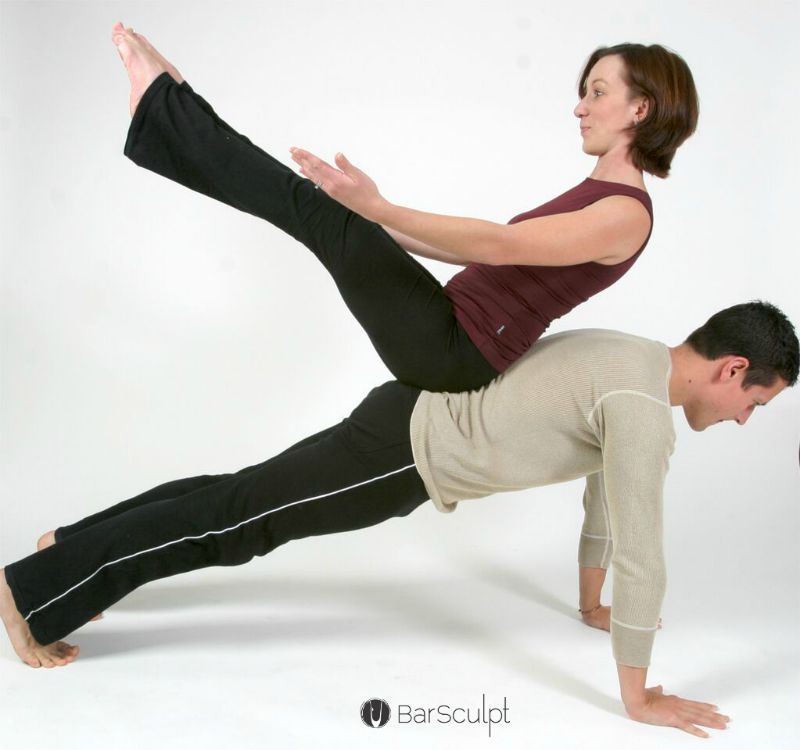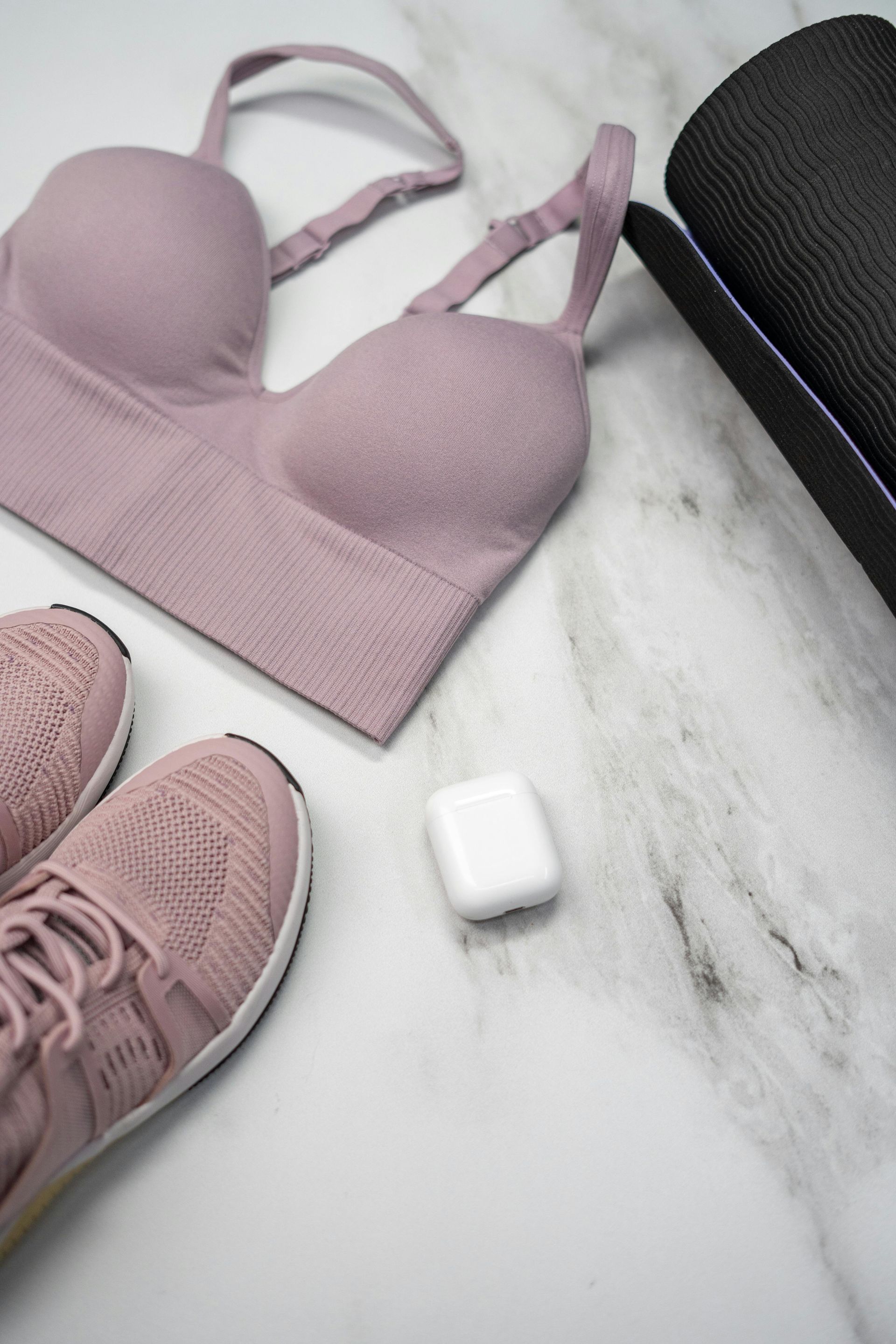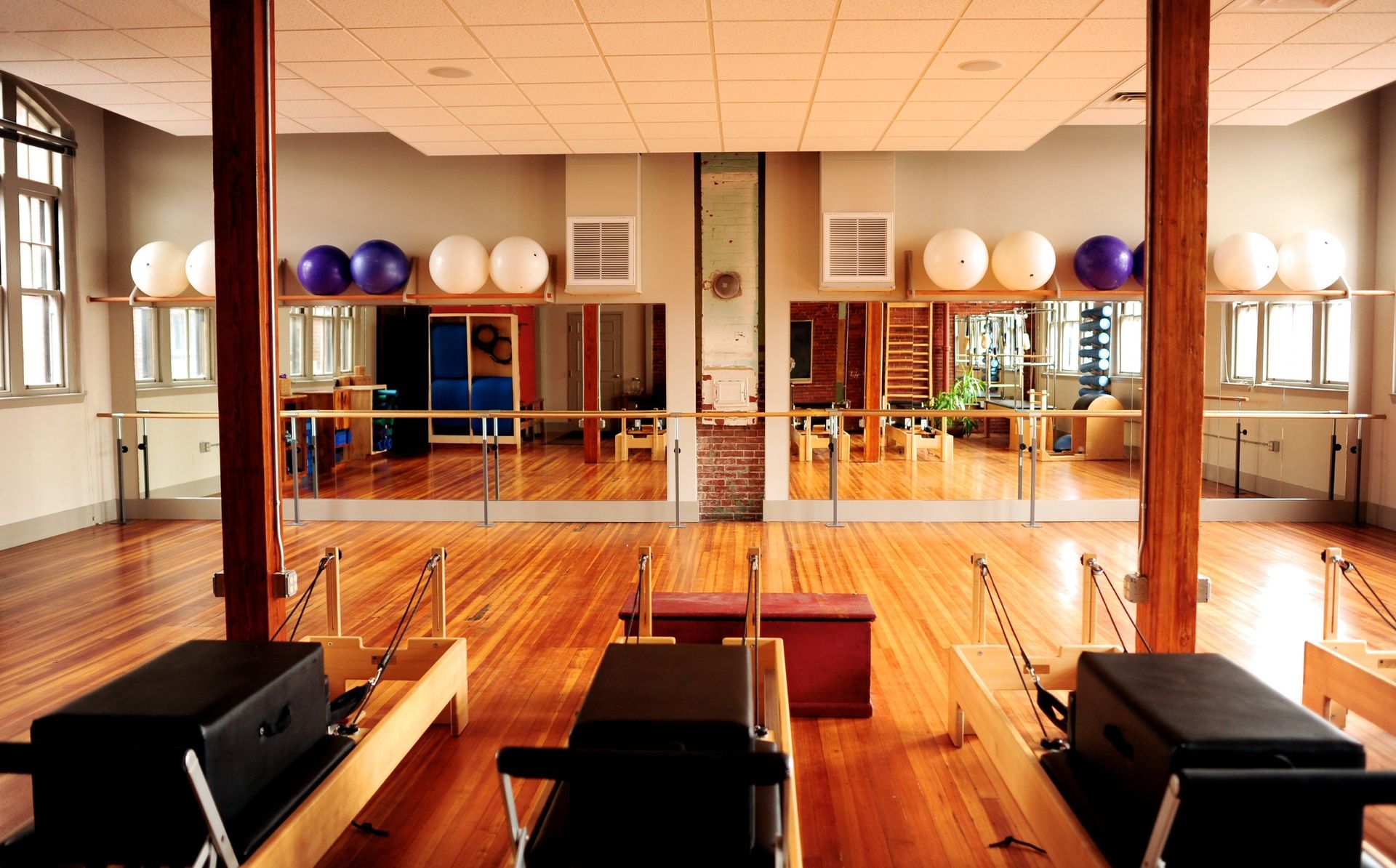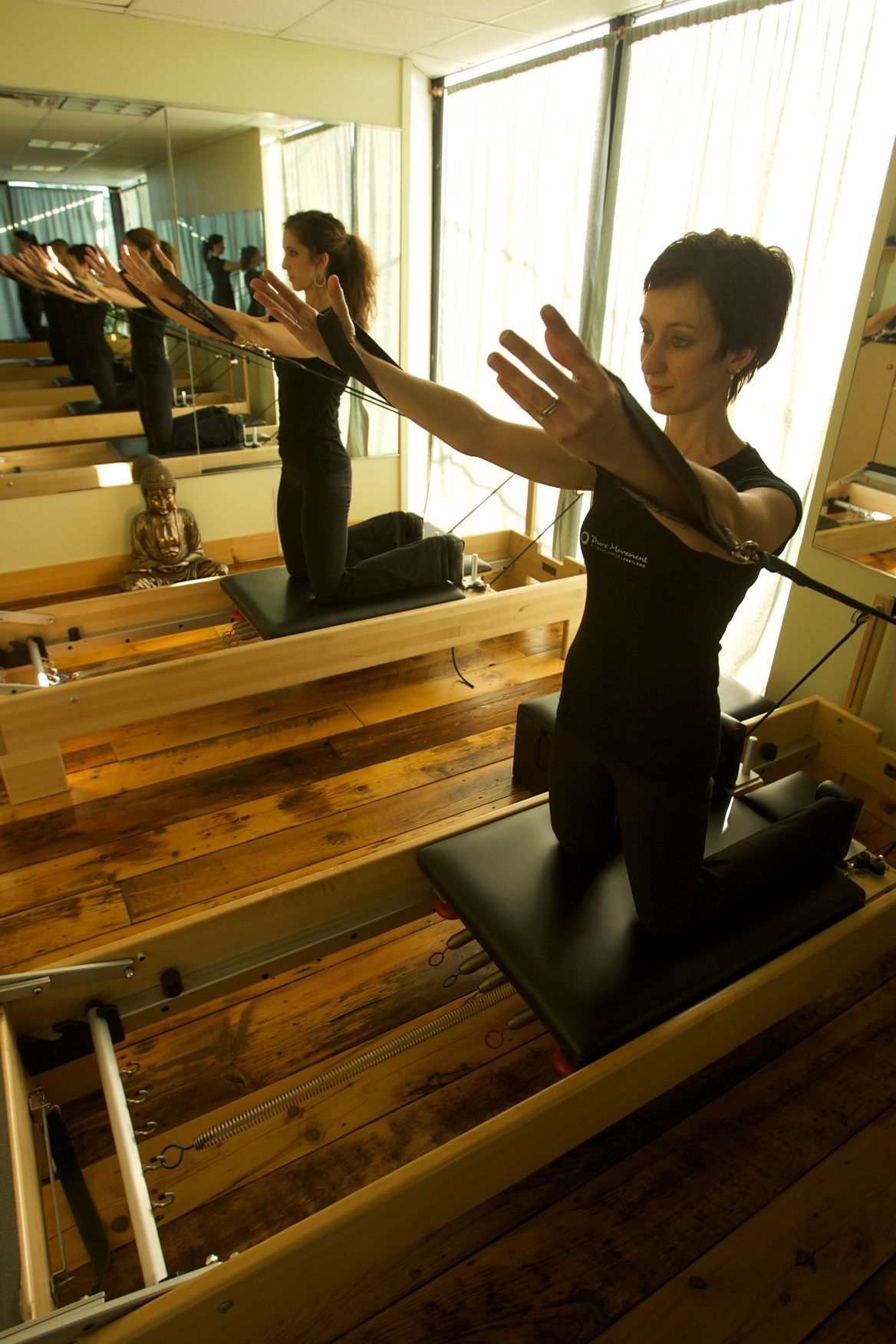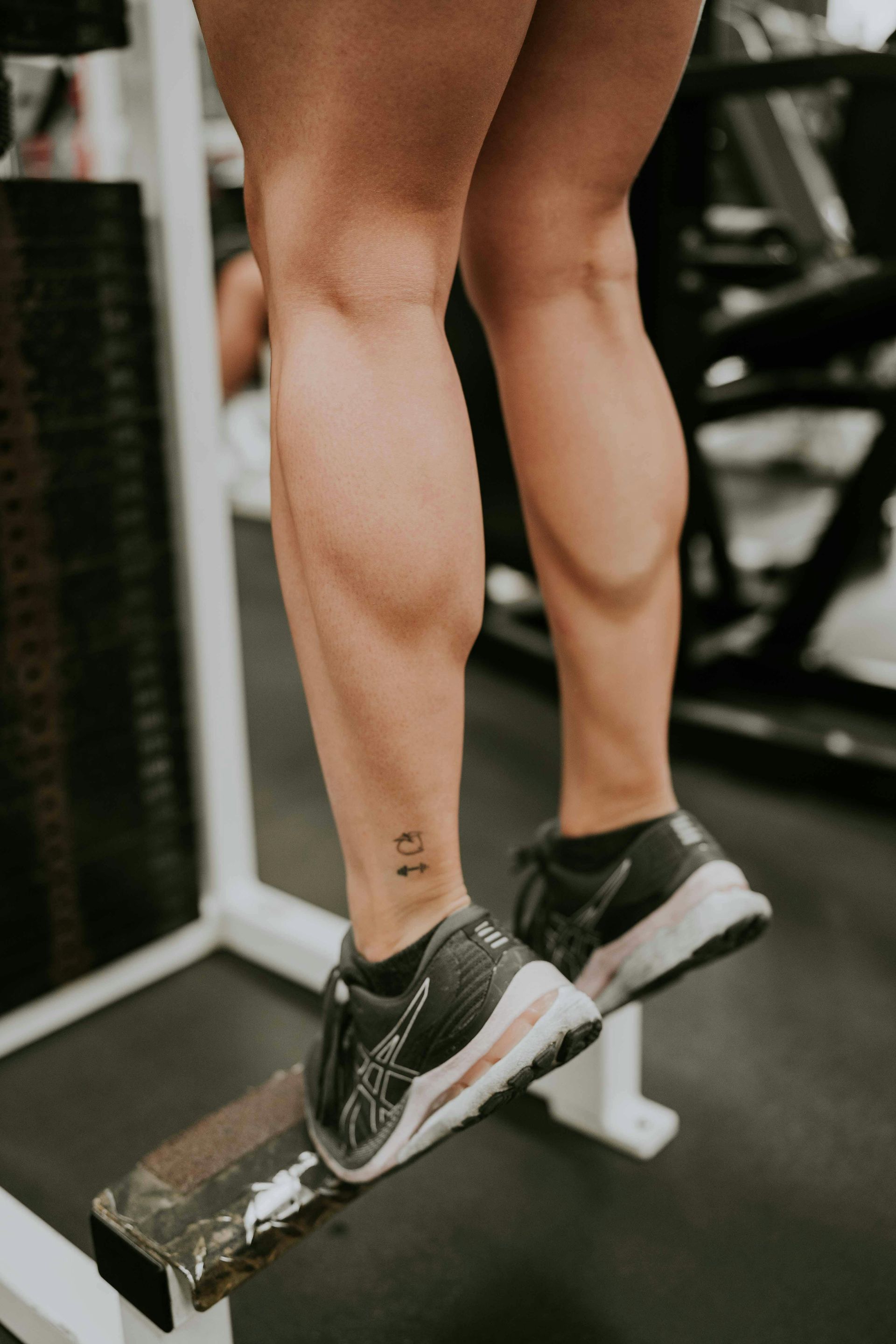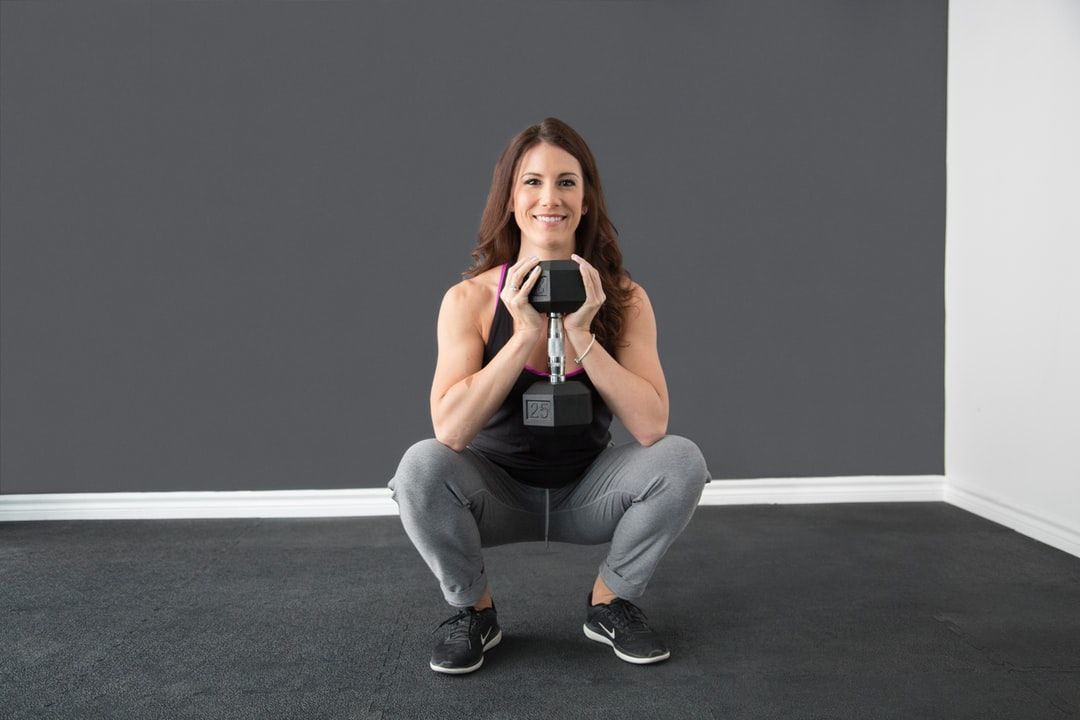By Leslie Guerin
•
September 9, 2025
Let’s be honest: we’ve all done it at some point. You’re rushing from home, work, or errands, and you head to a Pilates class without giving much thought to what you’re wearing underneath your workout clothes. You throw on leggings, a top, and—without hesitation—your regular bra. After all, it’s just Pilates mat. It’s not running or jumping. How much could it really matter? The answer: a lot. In fact, wearing a traditional bra to Pilates mat class is one of the most common and avoidable mistakes I see women make. It’s not just about fashion—it’s about biomechanics, spinal comfort, and setting yourself up for the best experience possible. What you wear directly affects how your body feels and functions in class. And while Pilates is all about building strength, mobility, and alignment, the wrong gear—especially the wrong bra—can sabotage your comfort, compromise your performance, and even contribute to back pain. Why the Regular Bra Doesn’t Work for Pilates A traditional bra is designed with one goal: to shape and support breasts under everyday clothing. Most are structured with: Rigid underwires that press against the ribcage. Narrow straps that dig into the shoulders. Hook closures that create pressure points along the spine. Materials meant for aesthetics, not breathability or movement. That’s fine when you’re sitting at a desk or going out for dinner. But once you lie down on a Pilates mat and start rolling, curling, flexing, and twisting, all of those design features work against you. Here’s why: Spinal Discomfort – Pilates mat work involves a lot of supine (lying on your back) positions. The hook-and-eye closure digs into your spine, making it impossible to fully relax into the mat. That constant pressure leads to tension and pain. Restricted Movement – Underwires and rigid fabrics restrict natural rib expansion. Pilates breathing is three-dimensional—it requires your ribs to expand outward and back into the mat. A stiff bra limits this, creating shallow breath and less effective core engagement. Strap Pressure – Narrow straps dig into your shoulders during roll-ups, teasers, or any exercise where arms are overhead. Over time, this creates tension in your neck and upper back, distracting you from the precision Pilates demands. Compromised Flow – Pilates is about finding flow and ease. If you’re constantly adjusting straps or wincing at a clasp digging into your back, you’re not flowing—you’re fidgeting. The Importance of Costume Choices in Pilates Joseph Pilates himself often referred to “contrology” as an art form, not just an exercise method. He cared about alignment, grace, and the whole-body experience. What you wear is part of that experience. Think of it as your “costume” for the role you’re playing in class: a student committed to moving with control, precision, and awareness. If your outfit is working against you—pinching, digging, or restricting—you’re not able to embody the method fully. When we talk about costume choices, we’re not talking about fashion statements or brand labels. We’re talking about gear that supports your physical comfort, safety, and performance . What to Wear Instead The good news? There are better options—gear that is designed for movement, breath, and spinal health. Sports Bras with Wide Bands Choose bras without clasps or underwires. Wide, flat bands distribute pressure evenly so there’s no digging when you lie on your back. Look for materials that are stretchy but supportive, allowing ribcage expansion. Straps that Support, Not Dig Racerback or cross-back straps often provide better distribution and freedom of movement. Adjustable but wide straps help customize fit without cutting into your shoulders. Seamless Designs A seamless sports bra reduces irritation from seams or hardware. The smooth surface also means less distraction when rolling or twisting. Breathable Fabrics Moisture-wicking fabrics keep you comfortable, especially in longer classes or when working deeply into your core. Breathability supports better skin comfort and prevents overheating. How the Right Gear Elevates Performance Some may wonder: “Isn’t Pilates gentle enough that it doesn’t matter?” Actually, it’s precisely because Pilates is subtle, precise, and deeply connected to body awareness that gear matters even more. When you’re wearing the right bra and clothing: You breathe better. Your ribs can expand, making core activation more effective. You move better. Nothing digs, pulls, or distracts you. You focus better. Your mind stays on alignment, not discomfort. You recover better. Less unnecessary tension means less strain post-class. Pilates is about efficiency. Every detail—your posture, your focus, your gear—affects how efficient your practice is. The Back Connection Why do I emphasize the back specifically? Because back pain is one of the most common reasons clients come to Pilates. When you wear a traditional bra in class, the hooks and underwires don’t just cause temporary discomfort—they can exacerbate chronic back tension. Imagine lying on a hard clasp for a 50-minute class: your muscles subtly guard and tighten around that pressure the entire time. That’s the opposite of what Pilates is meant to achieve. Pilates builds a strong, supported back by improving spinal mobility, core stability, and posture. Don’t undermine that by placing an uncomfortable piece of hardware directly under your spine. A Personal Note as a Teacher As someone who has been teaching Pilates and Barre for over 26 years, I’ve seen every wardrobe choice imaginable. I’ve seen clients show up in jeans, in slippery socks, in bras with enough underwire to set off airport security. And every single time, their experience was compromised—not because they lacked strength or effort, but because their clothing was working against them. When I suggest a gear change, it’s never about judgment. It’s about giving clients the best chance to feel what Pilates really offers. Once someone experiences the difference—lying comfortably on the mat, breathing freely, moving without distraction—they never go back. The Mental Shift: Valuing Your Practice Here’s the bigger picture: choosing the right gear isn’t just about avoiding pain. It’s about valuing your practice enough to set yourself up for success. You wouldn’t show up to a dance performance in stiff jeans. You wouldn’t run a marathon in flip-flops. And you shouldn’t come to Pilates mat in a regular bra. Your costume matters because your practice matters. Conclusion Pilates is about creating strength, balance, and freedom in the body. But to access all of that, your body needs the right environment—and yes, that includes your clothing. A regular bra has no place in Pilates mat class. It will hurt your back, restrict your breathing, and distract from the flow. Choosing the right sports bra, with the right fit and fabric, sets the stage for comfort, performance, and a pain-free practice. So next time you head to class, take a moment to think about your costume. Give your body the gift of comfort. Because in Pilates, as in life, the details matter. And when the details work for you, the whole experience transforms.
